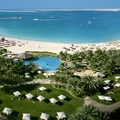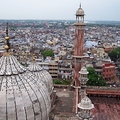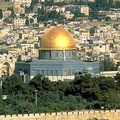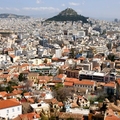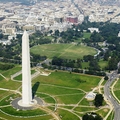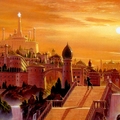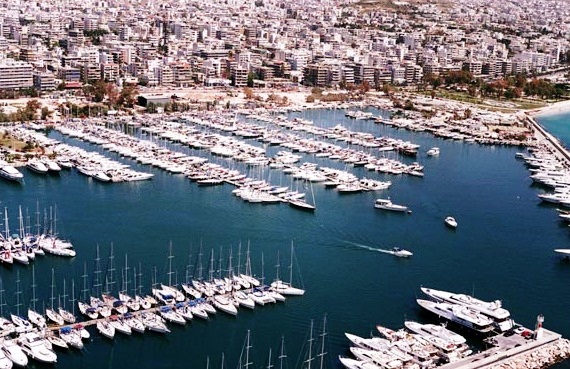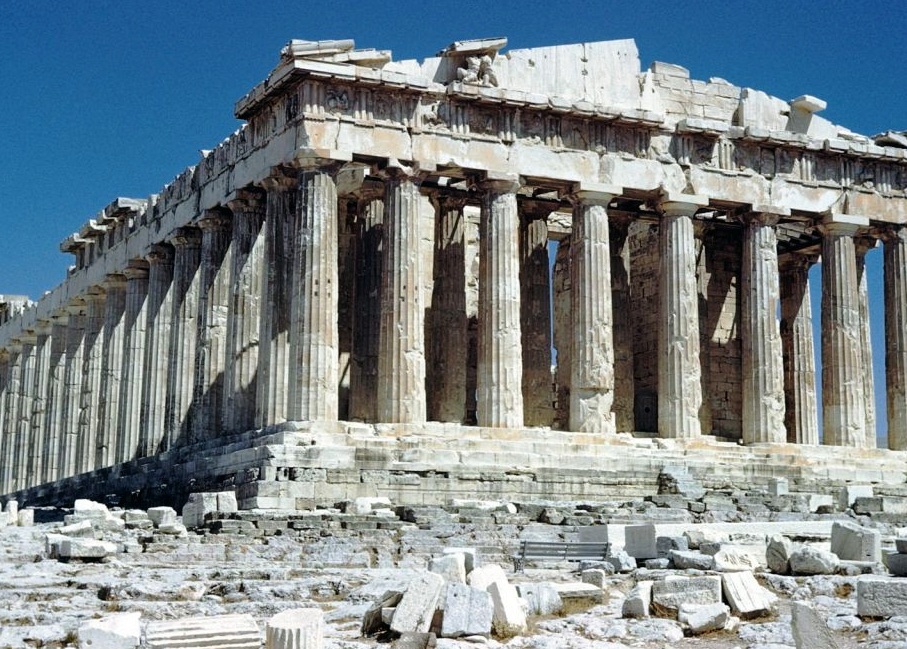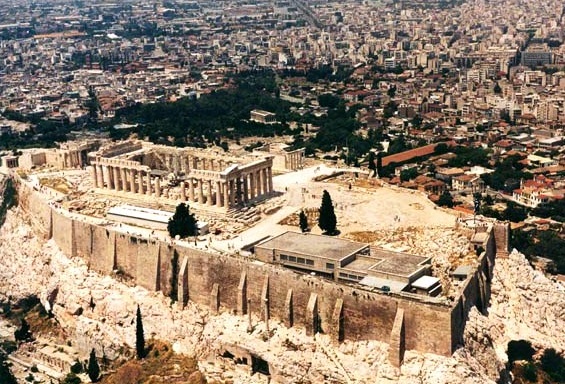Destinations / The best capital cities in the world / Athens-majestic capital city
Ads
Athens-majestic capital city
Sponsored Links
About Athens
Athens was the intellectual center of Greece and was founded more than 3500 years ago. Athens was one of the first city-states of its time, and it is still known as the most beautiful city in the world. The city is called after the Goddess of Wisdom, Athena, who is also the city’s patron. In 508 BC, Athens became one of the first societies in ancient times to establish the democracy. The city of Athens is the capital and the largest city of Greece. Athens dominates the Attica periphery and it is one of the oldest city in the whole world. The Greek capital is the city with the most glorious history, a city worshipped by gods and people, a treasured and magic city. The majestic capital of Greece has always been the birthplace of civilization. It was the city where the democracy was born, and the native place for the most wise men of the ancient times. Athens is constantly inhabited since Neolithic Age. The 5th century was the ideal time when the city had known its ultimate bloom. The amazing city is a place of different aspects. A walk around the historic triangle of old neighborhoods, relates the spirit of different eras. Old mansions, very well preserved ones and some other worn down by time. Chic department stores, intimate shops, trendy restaurants have their own place in the city, making it a great destination, for tourists who love art, or shopping.
Major attractions in Athens
Acropolis
The Acropolis dates back to the 5th century, when the city had known its powerful bloom. The hill on which is located the Acropolis is known to have been inhabited much earlier. In the 13th century the Mycenaeans built a royal palace on this site, surrounded by a fortification wall, some of its portion still exist. The word acropolis means “the highest point”. Nowadays the term refers totally to the Acropolis of Athens, which is a 156 meter high limestone rock. The Athenians built imposing temples, most of them dedicated to Goddess Athena on this rock. The first temples dedicated for Athena were constructed in the 8th century BC, during the Archaic Era. The largest religious festival, called Panathenaia was established in the city 150 years later. Monumental buildings, including the Old Temple, and the Hekatompedos, dedicated to Athena started to appear on the top of the hill during the festival. In 480 BC the Persians destroyed all the structures on the Acropolis. After the defeat of the Persians, in 479 BC, Pericles created a building project at the Acropolis, that took more than 50 years. The greatest structures that still exist and enchant the visitors are the Parthenon, the Propylaea, the Erechtheion, and the Temple of Athena Nike. The Propylaea is a monumental gateway to Acropolis that was built in the 5th century BC on the west side of the Acropolis. The construction of the fascinating building started in 437 BC, and it took till 432 BC to be completed. The Propylaea represented a large temple-like central temple, flanked by two wonderful wings. In front of the south wing of the Propylaea the Temple of Athena Nike was added. The Temple was dedicated to the Goddess of Victory. It represents a small temple founded in 421 BC and designed by Killikrates, who had also worked for Parthenon. The temple features four Ionic columns, each of 4,66 meters tall. The temple was destroyed by Othomans in 1687, but in 1834-1838 was reconstructed, when the original materials were found. The most wonderful structure on the Acropolis was the Pathernon, a temple which was founded between 447 and 438 BC. The temple was 70 meters long and 31 meters wide. The pediments of the building were decorated with unique sculptures, and large friezes adorned the temple. Most of the sculptures that beautified once the Pathernon are kept in the British Museum in London, the rest of them are displayed in the Acropolis Museum. The Erechtheion was erected between 421 and 406 BC. The temple was named after Erechtheus, who was a mythical king of Athens.
Ancient Agora
The Ancient Agora was the political heart of Athens, the commercial and social centre, during the Antiquity. The excavation of the area that started in the early 20th century, revealed a large numbers of temples and even a concert hall. Nowadays two immense buildings are untouched: the Temple of Hephaiston and the Stoa of Attalos, a large shopping center. The temple of Hephaiston was erected in the 5th century BC and was dedicated to the Gods Hephaistos and Athena. This temple consists of 34 Doric columns that support the roof. The Hephaiston is the best preserved temple in the country, which was declared a national monument in 1834. The Stoa of Attalos was founded in 150 BC by King Attalus II of Pergamon. It represents a two stories tall building, 116 meters long and 19 meters wide, that served as a shopping mall. Each floor of the building has 21 stores and the visitors can take a break and relax in the shade of the covered colonnade in front of the stores. The Stoa was destroyed by a Germanic tribe in 276 AD. Between 1953 and 1956 the Stoa was rebuilt on the area of the ancient structure by the American School Archaeology. Nowadays houses the Agora Museum, that includes the items found on the archaeological site of the Ancient Agora.
Temple of Zeus
The temple is also known as the Temple of Zeus Olympios and was the largest temple in Greece. The construction of the structure started in the 6th century BC, and was completed in the 2nd century, during the Roman Era. It took almost seven centuries to complete the massive temple of Zeus Olympios. During the democratic period the temple has been seen as a symbol of oppression, and the work on it was interrupted. However the work on the temple continued in 175 BC, under the supervision of the King Antiochus IV. He hired a Roman architect Cossutius to create the design for the largest temple in the world. But Antiochus died in 164 BC and the work was interrupted one more time. In 132 the Philhellenic Emperor Hadrian decided to complete the unfinished temple and he dedicated it to Zeus Olympios. Originally it was designed as a temple of Doric Order, with a planned two rows of eight columns width and two rows of 21 columns in length. Nowadays only 15 of 104 huge high columns are kept. The columns surrounded an inner chamber, where two beautiful statues have been placed: the statue of Zeus and the statue of Emperor Hadrian.
Benaki Museum
The Benaki Museum is a notable museum that features a diverse collection that offer an overview of art and culture in Greece, starting with the Neolithic Age to the early 20th century. Antoni Benakis was born in Alexandria, as the son of the wealthy Greek merchant Emmanouil Benakis. Antoni was an art enthusiast and he started to collect art in Egypt. When he came back in Greece in 1926 he decided to give his collections of art to the Greek state. The collections are now displayed in his native home, which is a neoclassical mansion bought by his father in 1910. The exhibits of the museum give a timelessness spirit, a great overview over the history of Greek art and crafts, from the Prehistoric period to the modern age. They are lined in the several floors of the mansion, creating a tremendous and interesting place in itself. The first rooms of the museum offer an excellent overview of artifacts that belong to the Neolithic period, starting in the 7th millennium BC to the Archaic period in the 6th century BC. The guests will get to see an interesting collection that includes clay vases, basic tools, jewellery, sculptures, and painted vases . The next rooms offer an overview of the classical period, the Golden Age of Athens, where you can see a large number of classical sculptures, vases, jewellery, including a beautiful Hellenistic belt that dates back to the 3rd century BC. Some of the rooms are dedicated to the traditional Greek culture and daily life of the country. The last series of rooms include items from the fight for independence in the 19th century, showing weapons, from revolutionaries.
National Garden
The National Garden is a green space located in the very heart of Athens. The garden is a popular place especially during the weekends when many families come here to rest, to relax and have some fun. The garden covers a surface of about 16 hectare and was created as a private garden for the Royal Palace. It was laid out for the first time in 1836 by the architect Friedrich von Gärtner. After the royals moved to a new palace, in 1923, the garden was officially opened to the public. At the same time it was renamed as the National Garden. The spectacular park soon became very popular among citizens, as it is a quiet and tranquil refuge from the noisy city centre. The garden is beautifully decorated with statues, flowerbeds, and some unique ruins from Antiquity. There is also a zoo, a duck pond and playgrounds for children. The gardens are a peaceful place where you can spend memorable moments, surrounded by the picturesque beauty of the nature.
Kerameikos
Kerameikos is the area on which an ancient cemetery is located. It was discovered in the early 20th century, by the German archaeologists. The cemetery was situated near the defensive walls that surrounded the city. The Kerameikos cemetery is named after Keramos, the mortal son of the god Dionysus and Ariadne, who was the protector of the potters. The ancient cemetery of Athens, where the people were buried since the 12th century BC, was situated outside of the city walls. The citizens were buried along the road that goes to the Plato’s Academy. The road was lined with remarkable tombs, statues and funerary stelai, beautifully decorated with relief sculptures. The most magnificent monument is definitely the tomb of a treasurer, with a statue of a bull, the symbol of Dionysus. Near the entrance to the Kerameikos a small museum is standing where many monuments were discovered during the excavation. A large number of funerary vases, sculptures, painted ceramics are included on its display.
Hadrian’s Library
The large complex is known as the library of Hadrian that was built in the 2nd century AD by the Roman Emperor Hadrian. The Emperor ruled the Roman Empire between 117 and 138 AD and was a lover of the Greek culture. Hadrian wanted to make Athens the cultural capital of the Roman Empire. During his visits in Athens he started many building projects, including the construction of a large library. The library was erected between 125 and 132 AD, with a rectangular shape. It looked more as a cultural complex, featuring lecture halls, a transcriptions room, and a library hall. The complex was built around a large rectangular inner garden, with a pond, measuring over 120 meters long and 78 meters wide. It was adorned with massive marble statues of Athena and Hadrian. The floors of the halls were decorated with mosaic marble tiles. The building was seriously damaged during the sack of Athens, done by a Germanic Heruli tribe. During the 5th century there was built a new building, on the top of the ruins. Later in the 11th century a new church was constructed there, which was demolished in 1885. A small church was built in the 12th century, located at the entrance of the library. But it was also destroyed in 1843. The most visible remainder of the library is a section of the outer wall, with huge Corinthian columns.
These incredible attractions are just few examples of the touristic potential of Athens. It is a very rich and valuable destination, that features overwhelming landmarks, majestic landscapes and many tremendous historical monuments that are worthy to be seen. Athens is also a huge and busy place in Greece, with a wide variety of things to do and to see. There are several beaches at Athens Riviera and are very clean and beautiful, ideal for a splendid experience. The tourists can spend unforgettable moments in the city, surrounded by the most treasured and valuable attractions in the world, dating back to the beginning of civilization. It is a truly fascinating town, that enchants everybody with charming ambiances, exciting adventures and unrepeatable sightseeing places, that make you feel gorgeous and tranquil.
Sponsored Links
By Eugenia Cvasov
Sponsored Links
Others The best capital cities in the world .
Others from The best capital cities in the world
Is there a person who doesn't like to travel? I think no.
Who doesn't wish for an exciting vacation or who isn't attracted by fascinating experiences? This poll provides comprehensive information about the best, most important capital cities in the world that we generally recommend as wonderful places to explore.
Let them be your starting point and consider these places might occur to you and suit your goals.
These are the most liveable,friendly and multicultural cities on Earth, with the most exciting cultures,with the most beautiful beaches, with the most lively nightlife and the most beautiful scenery.
Explore the cities and find out the best kept secret of each of them.
I'm sure you'll experience senses to the fullest intensity.
Who doesn't wish for an exciting vacation or who isn't attracted by fascinating experiences? This poll provides comprehensive information about the best, most important capital cities in the world that we generally recommend as wonderful places to explore.
Let them be your starting point and consider these places might occur to you and suit your goals.
These are the most liveable,friendly and multicultural cities on Earth, with the most exciting cultures,with the most beautiful beaches, with the most lively nightlife and the most beautiful scenery.
Explore the cities and find out the best kept secret of each of them.
I'm sure you'll experience senses to the fullest intensity.
Images of Athens-majestic capital city, icons, photos, figures, visions, appearances, illustrations, snapshots, captures, canvas and pictures of Athens-majestic capital city - The best capital cities in the world
Sponsored Links
Sponsored Links



